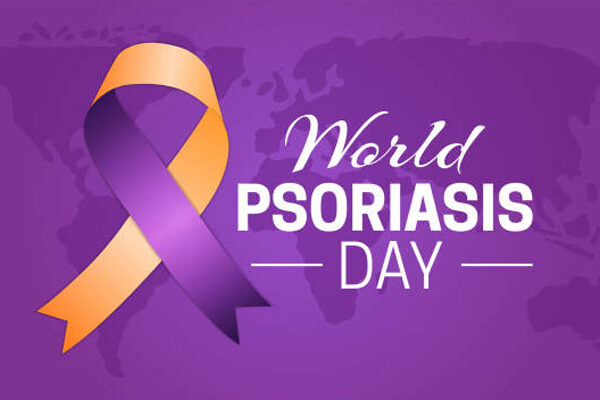Updated on January 17, 2024
Overview:
Scleroderma life expectancy – Systemic sclerosis usually referred to as scleroderma, is a collection of uncommon disorders that cause the skin to tighten and stiffen. Scleroderma is frequently labeled as “limited or localized” or “diffuse or systemic,” which merely describes how much skin is affected. Both forms may involve any other organ or vascular issues. Skin alone is impacted by localized scleroderma, commonly known as morphea. Scleroderma has no definite cure, although new potential therapies can reduce symptoms, halt progression, and enhance the quality of life.
Learn more about Scleroderma, its causes, symptoms, and scleroderma life expectancy, in this article.
What is the Etiology Of Scleroderma?
Scleroderma has no recognized etiology (cause). However, scientists believe that when the immune system overreacts, it damages the blood vessel lining cells and results in inflammation. This expedites the production of excessive amounts of collagen and other proteins by connective tissue cells, particularly a cell type called fibroblasts.
What are the Symptoms?
The signs and symptoms of scleroderma differ from person to person based on the affected areas of the body. It may also have an impact on scleroderma life expectancy.
Skin-related Symptoms and Signs:
Almost all people with scleroderma notice that their skin becomes tighter and stiffer.
The first bodily areas to be afflicted are typically the fingers, hands, feet, and face. Forearms, upper arms, chest, abdomen, lower legs, and thighs can all experience skin thickening in some individuals. Itching and swelling are two early signs. As a result of the tightness, the affected skin may turn lighter or darker in color and appear glossy.
Some people also have a condition known as telangiectasia, which causes tiny red dots on their hands and faces. Bumps that can be painful can develop under the skin due to calcium deposits, especially at the fingertips.
One of the distinctive features of scleroderma on the skin is the salt and pepper look. This typically appears on the skull, upper back, or chest (along the hairline). Though not always, the skin may feel tight or rigid. You should visit a doctor if your skin has a salt-and-pepper appearance. This can indicate that you have an internal organ-affecting form of scleroderma.
Stiffness of Joints and Immobility:
It happens as a result of the thickening and hardening of the skin, the tightness makes it difficult to move the joints. This loss of movement can majorly affect scleroderma life expectancy because restricted movements do have a major impact on overall physical health.
Muscle Weakness and Shortening:
The stiffness of muscles may lead to their extension. This results in muscle shortening and weakness.
Sores and Pitted Scars on the Fingers:
If you have a type of scleroderma that affects the internal organ then you may have a high chance of developing scars on your fingers. These scars most commonly appear on the fingers.
Extreme Sensitivity to Cold:
This is one of the warning signs of scleroderma affecting internal organs.
Raynaud’s Phenomenon:
This happens due to exaggerated and inappropriate contraction of blood vessels in the fingers and toes that turn blue, red, or white and numbness can be felt. The reason for it is emotional distress and cold. Raynaud’s phenomenon is also observed in people who have scleroderma. Raynaud’s phenomenon can affect scleroderma life expectancy to a great extent.
What Happens When Other Organs Are Affected?
Skin and internal organs including the lungs and kidneys are both impacted by some kinds of scleroderma. The following signs that scleroderma may be harming an internal organ include:
Digestive System:
- Difficulties swallowing
- Heartburn
- Diarrhea
- Constipation
- Bloating
- Loss of weight without effort
Other Organs:
- Elevated blood pressure
- Irregular heartbeat
- Breathing difficulty
- Absence of sexual desire
Consulting a dermatologist, rheumatologist, or another physician who treats skin conditions like scleroderma if you experience any of these symptoms is your best bet. The severity of symptoms might affect scleroderma life expectancy. The sooner you get the right diagnosis, the better the outcomes.
Types of Scleroderma
There are two main types of scleroderma: Localized and Systemic.
Localized Scleroderma:
- Circumscribed Morphea: This type of scleroderma involves discolored patches of skin that may vary in size. They can enlarge and then flatten with treatment.
- Generalized Morphea: This form has many thick, tight patches that can blend into each other, affecting various parts of the body.
- Linear Scleroderma: Linear scleroderma is common in children. It appears as tight bands on the skin, often causing underdevelopment in limbs.
Systemic Scleroderma:
- Limited Scleroderma: This is the most common type, primarily affecting the fingers, hands, forearms, and face. Internal organ damage is less likely, and life expectancy is generally normal. Some may experience issues like heartburn, severe Raynaud’s phenomenon, musculoskeletal pain, or, in rare cases, life-threatening pulmonary hypertension.
- Diffuse Scleroderma: Affects a larger area of the skin and can involve internal organs. It may lead to joint pain, inflammation, and muscle swelling.
- Sine Scleroderma: Involves internal organs without significant skin symptoms.
Symptoms of Scleroderma:
The two forms of linear scleroderma namely localized and systemic sclerosis appear with different symptoms. These include:
- Shiny, thick patches
- Discolored skin
- Joint tightness
Scleroderma Life Expectancy:
It is generally believed that people with localized scleroderma may live a healthy and long life with minor symptoms only. Whereas, people with systemic type may have a short span of life from 5 to 10 years. It is also observed that scleroderma death is common due to its devastating effects on the organs.
Diagnosis of Scleroderma:
If your signs and symptoms indicate that you have scleroderma, your doctor would prescribe some confirmatory tests to confirm the diagnosis. These tests will show the exact type of scleroderma. The tests conducted show what type of antibodies you have in your blood. Timely diagnosis can lead to better outcomes and a positive impact on scleroderma life expectancy.
There are 6 Types of Tests to Confirm the Diagnosis of Scleroderma:
- Antinuclear Antibody Assay
- Nailfold Capillary Test
- Modified Rodnan Skin Score
- Pulmonary Function Test
- Pulmonary Arterial Hypertension
- Upper GI testing
Treatment Options Affecting Scleroderma Life Expectancy:
- Medication: The medical team treating your kid may advise using nonsteroidal anti-inflammatory drugs (NSAIDs) or corticosteroids to reduce discomfort, penicillamine to halt the thickening process and prevent internal organ damage, or immunosuppressive drugs to prevent organ damage.
- Skin protection: The affected region can be protected with sunblock or cushioning.
- Exercise and physical treatment: Both can be utilized to keep muscles strong.
- Surgery: Surgical therapy options include the removal of isolated regions of aberrant tissue or the injection of fat. To increase volume, contour, and shape, fat is aspirated from another area of the body, cleansed, and then reinjected into the tissue beneath the skin. This is a minimally invasive technique that is typically performed without hospitalization. Direct excision of the aberrant tissue with the closure of the neighboring normal skin may be the preferred treatment approach in case of extensive portions of discolored, uneven skin are involved. While there may be a scar from this operation, it usually blends in with the underlying deformity. Additionally, since this treatment is often outpatient, you can go home the very same day.
Takeaway:
Scleroderma can be a painful and crippling condition. It may leave a person handicapped due to its effect on the joints. Therefore, it is vital to keep an eye on your symptoms so that the disease can be halted right there and scleroderma life expectancy can be improved to some extent. Revival Research Institute is conducting Dermatology Clinical Trials that may help treat various skin conditions.






